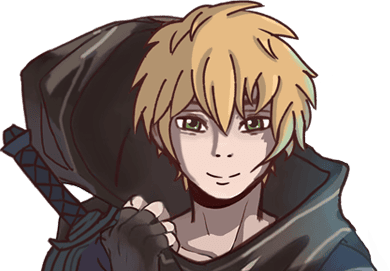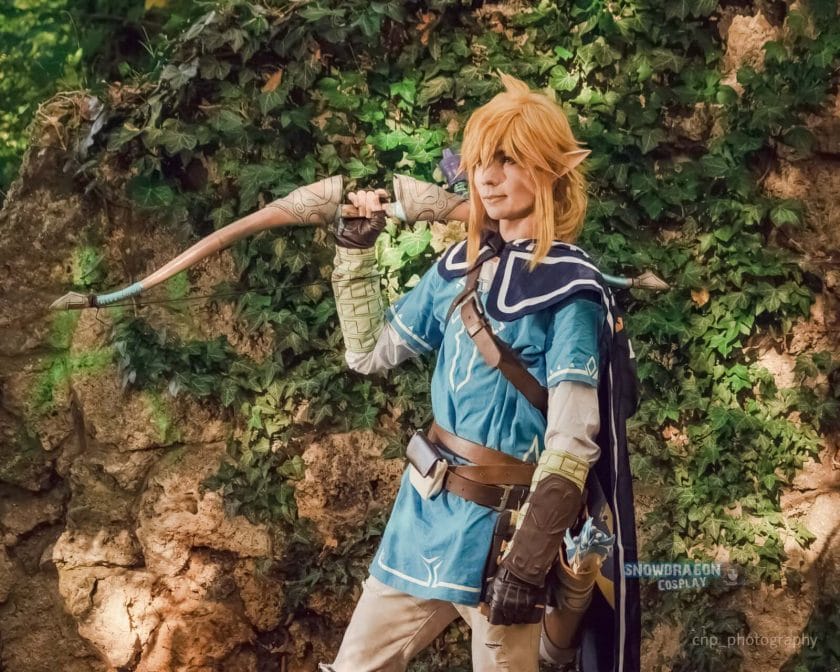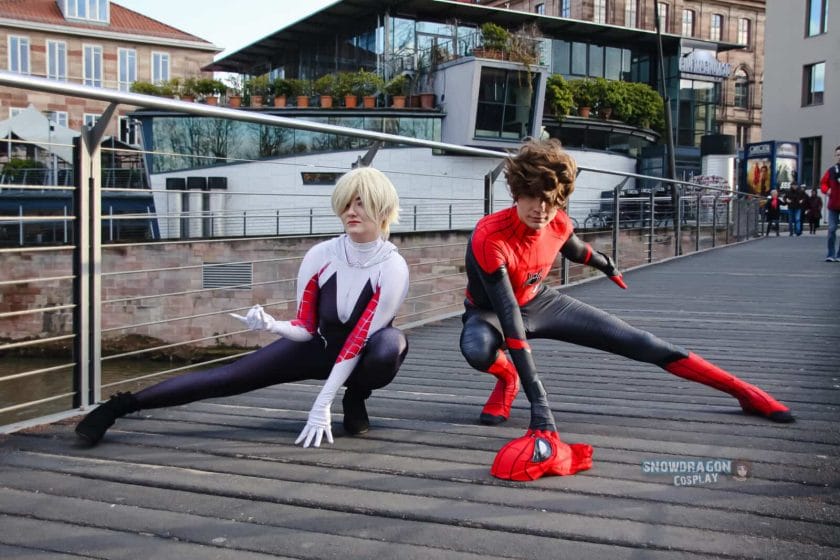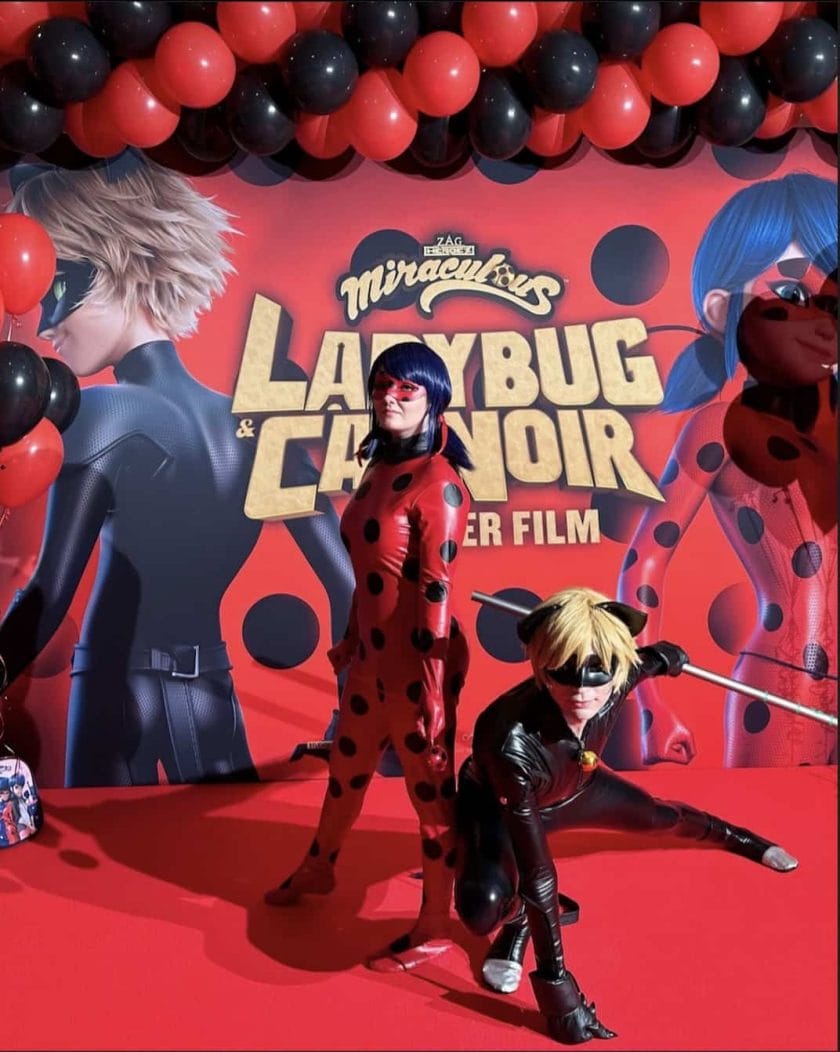[publishpress_authors_box layout="ppma_boxes_840322"]
N/A
1. The Definition of Furry Cosplay
Furry cosplay, also known as fursuiting, involves dressing up as anthropomorphic animal characters. These costumes typically consist of a full-body suit that covers the wearer from head to toe, complete with a mask or helmet that represents the character’s face and features. Furry cosplayers often create their own unique characters, known as fursonas, which they bring to life through their costumes and performances.
Fursuits can range from simple designs to elaborate creations with intricate details and animatronics. They are often made from materials such as faux fur, foam padding, and various crafting supplies. Furry cosplayers put a lot of time, effort, and creativity into designing and constructing their suits to accurately portray their chosen characters.
Some furry cosplayers also participate in role-playing activities while wearing their fursuits, interacting with others in character at conventions or events. This adds an extra layer of immersion and entertainment to the cosplay experience.
Overall, furry cosplay is a unique form of expression that allows individuals to embody their favorite animal characters and explore their creativity in bringing these characters to life.
2. The Evolution of the Furry Fandom Over the Years
The furry fandom has come a long way since its early days. What started as a niche interest among fans of anthropomorphic animals has grown into a vibrant community with its own conventions, online forums, and even dedicated art forms.
In the early days of the internet, furries primarily connected through online forums and chat rooms where they could share artwork, stories, and discuss their shared interests. As technology advanced and social media platforms emerged, the furry fandom found new ways to connect and showcase their creativity.
One significant development in recent years has been the rise of fursuiting as a prominent aspect of the furry fandom. Fursuits have become more sophisticated and accessible, allowing more furries to bring their characters to life in a tangible way. This has led to an increase in fursuit parades and performances at conventions, further solidifying the presence of furry cosplay within the community.
The furry fandom has also faced its fair share of challenges and misconceptions over the years. However, through active engagement with the public and promoting inclusivity, furries have been able to combat stereotypes and create a more accepting environment for all members of the community.
Overall, the evolution of the furry fandom showcases a passionate group of individuals who have embraced their love for anthropomorphic animals and found creative ways to express themselves within a supportive community.
3. Common Stereotypes Associated with Furries
Stereotypes about furries often stem from misunderstandings or misrepresentations in popular culture. While it’s essential to acknowledge that not all furries fit these stereotypes, it’s worth addressing some common misconceptions:
1. Furries are obsessed with animal sex: One prevalent stereotype is that being a furry is solely about sexual interests involving animals. In reality, most furries engage in the fandom for creative expression and community-building rather than purely sexual reasons.
2. Furries are socially awkward: Another stereotype suggests that furries are socially awkward or lack social skills. Like any other fandom or community, there is a diverse range of personalities within the furry fandom, including extroverts, introverts, and everything in between.
3. Furries want to be animals: Some people assume that furries wish they were actual animals or have a desire to become one. The truth is that most furries enjoy anthropomorphic animal characters as fictional creations but do not have any desire for a physical transformation.
4. Furries only wear fursuits for attention: While fursuits can be attention-grabbing at conventions or events, many furries create them as a way to bring their characters to life and enhance the overall cosplay experience. It’s not solely about seeking attention but rather expressing their creativity and love for the fandom.
It’s important to remember that stereotypes are often based on limited or inaccurate information. To truly understand the furry fandom, it’s crucial to engage with furries themselves and learn about their experiences and motivations firsthand.
4. Navigating and Challenging Stereotypes within the Furry Fandom
As a cosplayer agency brand from Nrnberg, we’ve had our fair share of encounters with stereotypes associated with furries. It can be frustrating when people make assumptions based on misconceptions rather than taking the time to understand the diverse individuals within the community.
One way to challenge these stereotypes is through education and open dialogue. By actively engaging with others and sharing accurate information about the furry fandom, we can help dispel misunderstandings and promote a more inclusive perspective.
Another approach is to lead by example. By showcasing the creativity, talent, and passion within the furry community, we can demonstrate that being a furry is about much more than just wearing a fursuit or indulging in sexual fantasies. Sharing stories of personal growth, artistic achievements, and community involvement can help shift public perception in a positive direction.
Additionally, fostering an inclusive environment within the furry community itself is essential. By embracing diversity and welcoming newcomers without judgment, we can create a space where individuals feel comfortable expressing themselves authentically. This inclusivity extends beyond just furries; it also means being accepting of those who may not fully understand or appreciate the fandom.
While challenging stereotypes may seem like an uphill battle at times, every effort counts. By actively working towards dispelling misconceptions surrounding furries, we contribute to creating a more understanding world where people can freely express their passions without fear of judgment or ridicule.
1. The Definition of Furry Cosplay
What is Furry Cosplay?
Furry cosplay, also known as fursuiting, is a form of performance art where individuals dress up in anthropomorphic animal costumes. These costumes typically consist of a full-body suit, often featuring intricate designs and details to resemble specific animal characters or original creations. Furry cosplayers often adopt a persona or character while wearing their fursuits, engaging in role-playing activities and interacting with others within the furry community.
The Origins of Furry Cosplay
The roots of furry cosplay can be traced back to science fiction and fantasy literature, where anthropomorphic animal characters have long been featured. However, it wasn’t until the late 20th century that furry fandom began to gain traction as a subculture centered around anthropomorphic animals. With the rise of conventions and online communities dedicated to furries, the practice of fursuiting became more prominent as a way for individuals to express their love for these characters and immerse themselves in a unique form of self-expression.
2. The Evolution of the Furry Fandom Over the Years
The Early Days: Emergence of Furry Fandom
The furry fandom emerged in the 1980s through various sci-fi and fantasy conventions where fans with an interest in anthropomorphic animals would gather to discuss their favorite works. These early gatherings laid the foundation for what would become a vibrant and diverse community centered around shared interests in artwork, literature, and role-playing involving anthropomorphic characters.
The Internet’s Influence on Furry Fandom
The advent of the internet in the 1990s played a significant role in expanding and connecting the furry fandom worldwide. Online platforms such as forums, social media groups, and websites allowed furries to connect, share artwork, discuss their interests, and organize conventions and events. This increased accessibility and interconnectedness led to the rapid growth of the furry fandom, enabling furries from different countries and backgrounds to come together and form a strong sense of community.
3. Common Stereotypes Associated with Furries
Misconceptions About Furries
Furries often face numerous stereotypes that can lead to misunderstandings about their interests and motivations. One common misconception is that all furries have a sexual interest in anthropomorphic animals. While some individuals within the furry community may engage in adult-oriented artwork or role-playing, it does not represent the entire community’s interests or intentions. It is essential to recognize that being a furry is primarily about appreciating anthropomorphic characters as a form of self-expression and creativity.
Association with Deviant Behavior
Another stereotype associated with furries is the belief that they engage in deviant or abnormal behavior. This misconception stems from sensationalized media portrayals and isolated incidents involving a small subset of individuals within the furry community. In reality, most furries are simply passionate fans who enjoy creating or appreciating art, attending conventions, and participating in online communities centered around anthropomorphic characters.
(Note: Please let me know if you would like me to continue expanding on any specific subheadings.)
4. Navigating and Challenging Stereotypes within the Furry Fandom
Understanding Stereotypes
Stereotypes surrounding the furry fandom often portray its members as socially awkward or sexually deviant individuals. However, it is important to recognize that these stereotypes are not representative of the entire community. While there may be some individuals who fit these stereotypes, many furries are simply fans of anthropomorphic animal characters and enjoy expressing themselves through art, costumes, and role-playing.
Challenging Stereotypes
Furries actively challenge these stereotypes by promoting inclusivity, acceptance, and creativity within their community. They emphasize that being a furry is not solely about sexual fetishes or inappropriate behavior but rather about celebrating imagination and self-expression. Many furries engage in charitable activities such as fundraising for animal-related causes or volunteering at conventions to foster a positive image of the fandom.
List of Common Stereotypes:
- Furries are all sexually deviant.
- Furries are socially awkward or have difficulty interacting with others.
- Furries engage in bestiality or have an unhealthy obsession with animals.
- Furries only participate in the fandom for fetishistic reasons.
5. Understanding the Difference Between Fursuits and Other Types of Cosplay
Defining Fursuits
Fursuits are elaborate costumes worn by members of the furry fandom to portray their anthropomorphic animal characters. These costumes typically consist of a full-body suit, often featuring padding, animatronics, or other enhancements to mimic animal characteristics. Fursuiters may also wear masks or heads that resemble their chosen character’s face.
Contrasting with Traditional Cosplay
While fursuits and traditional cosplay share similarities in terms of costume creation and role-playing, there are distinct differences between the two. Traditional cosplay involves dressing up as characters from various media such as anime, video games, or movies. In contrast, fursuiting is centered around creating original anthropomorphic animal characters or embodying existing ones from furry art and literature.
Key Differences:
- Fursuits focus on anthropomorphic animal characters rather than established media.
- Fursuits often require more extensive construction due to their complex designs.
- Fursuits may include animatronics or other mechanisms to enhance the character’s appearance.
(Note: These are just a few examples of differences; there may be additional distinctions depending on the context.)
6. Popular Characters and Franchises in the Furry Community
Iconic Furry Characters
The furry community has developed numerous iconic characters that have gained significant popularity within the fandom. Some notable examples include:
– Sonic the Hedgehog: Originally a video game character, Sonic has become an enduring figure in furry culture due to his anthropomorphic design.
– Nick Wilde and Judy Hopps from “Zootopia”: These characters from Disney’s animated film resonated with furries for their relatable personalities and engaging storyline.
– Rocket Raccoon from Marvel Comics: Known for his snarky attitude and skilled combat abilities, Rocket Raccoon has captured the hearts of many furries.
Influential Franchises
Certain franchises have also had a significant impact on the furry community. These franchises often feature anthropomorphic animals prominently, attracting many furries who relate to or find inspiration in these works. Some influential franchises include:
– “Watership Down”: Richard Adams’ novel and subsequent animated film adaptation depicting a group of anthropomorphic rabbits navigating their way through survival challenges.
– “Redwall” series: Brian Jacques’ fantasy novels set in a world populated by anthropomorphic animals engaged in epic adventures.
– “The Lion King”: Disney’s classic animated film showcasing a diverse cast of anthropomorphic lions, meerkats, and warthogs.
(Note: The popularity of characters and franchises within the furry community may vary over time as new works are created.)
7. How Furry Cosplay Differs from Traditional Cosplay
Emphasizing Character Originality
One significant difference between furry cosplay and traditional cosplay lies in the emphasis on original character creation. While traditional cosplay often involves replicating existing characters from established media, furry cosplayers typically create their own unique anthropomorphic animal characters. This allows furries to express their creativity and imagination by designing original costumes that reflect their personal preferences.
Focus on Anthropomorphism
Furry cosplay places a strong emphasis on anthropomorphism, which involves attributing human characteristics to non-human creatures. Furries often incorporate elements such as human-like facial expressions, bipedal stances, or clothing into their costumes to enhance the anthropomorphic qualities of their characters. In contrast, traditional cosplay aims to faithfully recreate the appearance of pre-existing characters without necessarily incorporating anthropomorphic features.
Distinguishing Features:
- Furry cosplayers create original anthropomorphic animal characters.
- Furry cosplays emphasize human-like expressions and behaviors.
- Traditional cosplays focus on replicating existing characters from established media.
- Traditional cosplays prioritize accuracy rather than incorporating anthropomorphic traits.
(Note: These differences can vary depending on individual interpretations and preferences within the respective cosplay communities.)
8. Challenges and Obstacles for Furry Cosplayers in Costume Creation
Financial Constraints
Creating intricate and high-quality furry costumes, also known as fursuits, can be a costly endeavor. The materials required, such as faux fur, foam padding, and various accessories, can quickly add up in expenses. Additionally, commissioning professional fursuit makers to bring their designs to life can be quite expensive. As a result, many furry cosplayers face financial constraints that limit their ability to create the costumes they envision.
Technical Skills and Knowledge
Designing and constructing fursuits requires a range of technical skills and knowledge. Furries who wish to create their own costumes must learn techniques such as pattern making, sewing, sculpting, and airbrushing. Acquiring these skills may pose a challenge for individuals who are new to costume creation or lack access to resources for learning these techniques. Overcoming the learning curve and gaining proficiency in these areas can take time and effort.
Tips for Overcoming Challenges:
– Research cost-effective alternatives: Look for affordable materials or explore DIY options for certain components of the costume.
– Seek guidance from experienced cosplayers: Join online communities or attend conventions where you can connect with experienced furry cosplayers who can offer advice and share their expertise.
– Attend workshops or classes: Many conventions offer workshops on fursuit construction techniques. Participating in these educational opportunities can help improve your skills.
9. Expressing Identity through Costumes and Personas in the Furry Community
The furry community provides a unique platform for individuals to express their identity through costumes and personas. Many furries view their fursuits as extensions of themselves or representations of their inner selves rather than mere costumes. These elaborate outfits allow them to embody their chosen animal characters or original creations, enabling a form of self-expression that may not be easily achievable in everyday life.
Exploring Personal Creativity
Furry cosplayers have the freedom to unleash their creativity and imagination when designing their costumes and personas. They can experiment with various color combinations, patterns, and accessories to create unique characters that reflect their individuality. This creative process allows furries to express themselves artistically and explore different aspects of their personalities through their chosen animal personas.
Benefits of Expressing Identity through Costumes:
– Self-confidence: Wearing a fursuit can boost an individual’s confidence by providing them with a sense of empowerment and allowing them to embrace their true selves.
– Connection with others: Expressing one’s identity through costumes can help foster connections within the furry community. By sharing their creations and interacting with other furries, individuals can find like-minded individuals who appreciate their unique expressions of identity.
Note: Remember to continue expanding on the remaining subheadings.
10. The Role of Fantasy in the Furry Fandom and its Incorporation into Cosplay
The Power of Imagination
Fantasy plays a significant role in the furry fandom, allowing individuals to explore their creativity and express themselves through anthropomorphic characters. This imaginative aspect is particularly evident in cosplay within the community. Cosplayers often bring their favorite furry characters to life by creating intricate costumes that embody both human and animal characteristics. Through this process, they not only engage with their own fantasies but also contribute to the larger fantasy world within the fandom.
Creating Unique Characters
One of the main attractions of the furry fandom is the opportunity to create unique characters that reflect one’s personality and interests. Cosplayers take this concept a step further by meticulously designing costumes that capture every detail of their character’s appearance. From choosing fabrics and materials to crafting accessories, cosplayers immerse themselves in a world of fantasy as they bring their creations to life. This incorporation of fantasy into cosplay allows for endless possibilities and encourages individuality within the community.
Exploring Alternate Realities
Cosplaying furries also provides an avenue for individuals to explore alternate realities or storylines associated with their characters. They can participate in role-playing scenarios at conventions or events, where they interact with other cosplayers as if they were part of a shared universe. This collaborative storytelling experience enhances the sense of immersion in a fantastical world, fostering connections among members of the furry fandom who share similar interests and narratives.
Overall, fantasy serves as a driving force behind both the furry fandom and its incorporation into cosplay. It allows individuals to unleash their imagination, create unique characters, and explore alternate realities through interactive experiences at conventions and events.
11. Addressing Misconceptions about Furries
Misunderstandings and Stereotypes
The furry fandom often faces misconceptions and stereotypes from those who are unfamiliar with it. One common misconception is that furries have a sexual interest in animals, which is entirely false. It is essential to address these misunderstandings and shed light on the true nature of the community.
Artistic Expression and Identity
A crucial aspect of the furry fandom is its emphasis on artistic expression and identity. Many furries engage in activities such as creating artwork, writing stories, or participating in cosplay to express themselves creatively. The focus is on anthropomorphic characters and their unique traits, rather than any inappropriate or harmful intentions towards real animals.
Community Values and Inclusivity
Another misconception about furries is that they are exclusionary or elitist. However, the reality is quite the opposite. The furry community values inclusivity, acceptance, and diversity. Furries come from various backgrounds, genders, sexual orientations, and ethnicities. They embrace differences and create an environment where everyone feels welcome and respected.
Non-Sexual Aspect of Furry Fandom
It is crucial to highlight that while some individuals within the furry fandom may explore adult-oriented content or engage in role-playing scenarios with adult themes, this does not represent the entire community. The majority of furries participate in the fandom for non-sexual reasons such as creativity, camaraderie, and shared interests.
By addressing these misconceptions about furries, we can promote a better understanding of the community’s values and foster a more inclusive environment for both newcomers and existing members.
12. Interactions Among Furries at Conventions and Events
A Gathering of Like-Minded Individuals
Conventions and events serve as significant opportunities for furries to come together, connect with one another, and celebrate their shared interests. These gatherings create a vibrant and lively atmosphere where interactions among furries are abundant.
Networking and Collaboration
One of the primary benefits of attending furry conventions is the opportunity for networking and collaboration. Furries can meet artists, writers, cosplayers, and other creative individuals who share their passion. This allows for the exchange of ideas, feedback on artistic projects, and potential collaborations on future endeavors. These interactions foster a sense of community and encourage growth within the fandom.
Role-Playing and Interactive Experiences
Conventions also provide platforms for furries to engage in role-playing activities or interactive experiences. From organized events such as scavenger hunts or live-action role-playing games to spontaneous interactions in character, these experiences allow furries to immerse themselves in a shared fantasy world. They can interact with fellow furries as well as fans who appreciate their creativity, further strengthening the bonds within the community.
Celebrating Creativity and Talent
Conventions often feature showcases or competitions where furries can display their artistic talents. These events range from art exhibitions to costume contests, providing an opportunity for individuals to showcase their creativity and receive recognition for their skills. Interacting with fellow artists or cosplayers at these events not only fosters a sense of camaraderie but also encourages personal growth by inspiring individuals to push their creative boundaries.
Overall, conventions and events serve as catalysts for interactions among furries. They provide platforms for networking, collaboration, role-playing experiences, and celebrating creativity within the community.
13. The Sense of Community within the Furry Fandom Supporting Cosplayers
A Supportive Network
The furry fandom is known for its strong sense of community, which extends support to cosplayers within the fandom. This supportive network plays a crucial role in encouraging cosplayers’ creativity, providing resources, and fostering a sense of belonging.
Sharing Knowledge and Skills
Within the furry community, experienced cosplayers often share their knowledge and skills with newcomers. This exchange of information can range from tutorials on costume construction techniques to advice on makeup application or prop building. By sharing their expertise, experienced cosplayers empower and inspire others to improve their craft, creating a culture of continuous learning within the community.
Collaborative Projects and Group Cosplays
The sense of community within the furry fandom extends to collaborative projects and group cosplays. Furries often come together to work on large-scale projects, such as creating themed costumes or organizing performances at conventions. These collaborative efforts not only foster teamwork but also create opportunities for individuals to showcase their talents in a supportive environment.
Mentorship and Guidance
Established members of the furry fandom often act as mentors for aspiring cosplayers. They provide guidance, feedback, and encouragement to help newcomers navigate the world of cosplay effectively. This mentorship helps build confidence in cosplayers’ abilities, allowing them to further develop their skills and pursue their creative aspirations.
The sense of community within the furry fandom provides a support system for cosplayers. It encourages knowledge-sharing, collaboration, and mentorship, fostering personal growth and creativity within the cosplay aspect of the fandom.
14. Ethical Considerations Regarding Animal Materials in Fursuits or Costumes
Promoting Ethical Practices
When it comes to fursuits or costumes within the furry fandom, ethical considerations regarding animal materials are essential. The community recognizes the importance of promoting ethical practices that prioritize animal welfare while still allowing individuals to express themselves creatively through anthropomorphic characters.
Faux Fur Alternatives
One way furries address ethical concerns is by utilizing faux fur alternatives in fursuit construction or costume design. Faux fur is a synthetic material that replicates the texture and appearance of real animal fur without harming animals. By opting for faux fur, furries can still achieve the desired aesthetic while avoiding any ethical dilemmas associated with using real animal materials.
Upcycling and Recycling
Another ethical consideration within the furry fandom is the concept of upcycling and recycling materials. Many cosplayers and fursuit makers repurpose existing clothing or materials to create their costumes, reducing waste and minimizing the need for new resources. This practice aligns with the community’s values of sustainability and responsible consumption.
Supporting Ethical Suppliers
Furries also prioritize supporting ethical suppliers who source their materials responsibly. They seek out companies that adhere to strict animal welfare standards or use alternative materials that do not harm animals in any way. By consciously choosing to purchase from these suppliers, furries contribute to a more sustainable and compassionate industry.
By considering these ethical practices, the furry fandom demonstrates its commitment to promoting responsible choices when it comes to using animal materials in fursuits or costumes. The community encourages alternatives such as faux fur, upcycling/recycling, and supporting ethical suppliers to ensure that creativity can flourish while respecting animal welfare.
In conclusion, the world of furry cosplay and fandom is a diverse and exciting community that often faces unfair stereotypes. Whether you’re a fan or interested in joining this vibrant subculture, it’s important to navigate through misconceptions and embrace the creativity and passion that lies within. If you’re looking for high-quality cosplay services to bring your furry fantasies to life, don’t hesitate to check out our offerings! We’re here to help you unleash your imagination and create unforgettable experiences. So go ahead, let your inner fur-real or fantasy shine!
N/A








